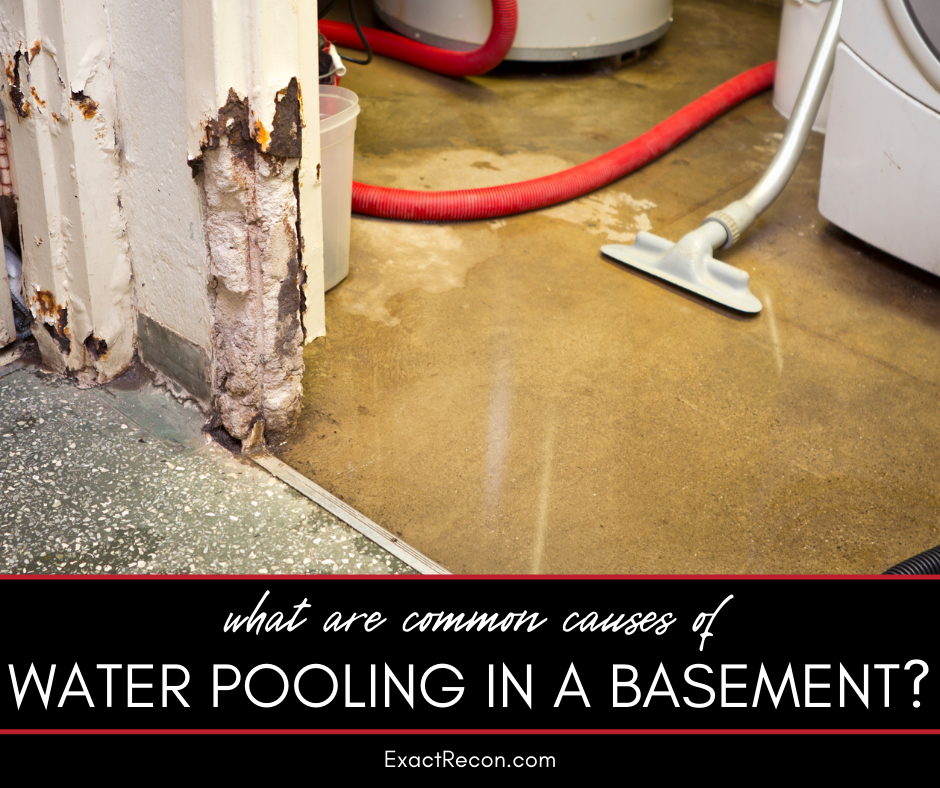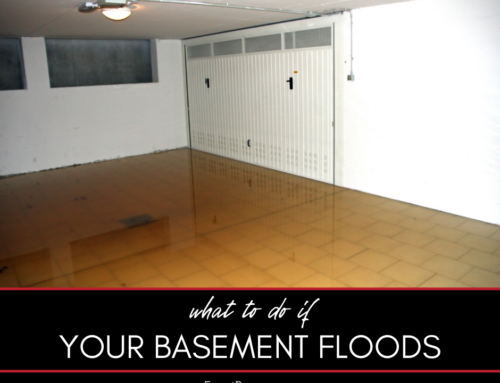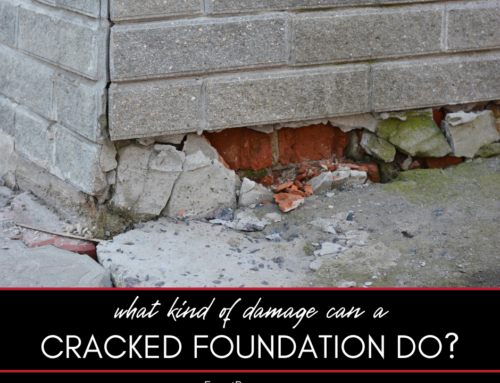A dry basement is a happy basement. But sometimes, homeowners find unexpected puddles or even pools of water in their lower levels. If you’ve ever stepped into a surprise puddle in your basement or are just curious about potential causes, this guide is for you. With our expertise, we aim to shed light on why water might be making an unwelcome appearance in your basement.
What Are Common Causes of Water Pooling in a Basement?
Water in the basement isn’t just an inconvenience; it can lead to bigger issues if not addressed. Understanding the root causes can help you take preventive measures.
This guide covers:
- Poor drainage systems
- Cracks in the foundation
- Malfunctioning sump pumps
- Leaky basement windows
- Plumbing issues
- Landscape grading problems
Here’s a closer look at each.
Poor Drainage Systems
Gutters and downspouts play a pivotal role in managing rainwater and ensuring it’s directed away from your home. When these systems are clogged, damaged, or improperly installed, they can’t effectively divert water. Instead of flowing away, the water can spill over and pool around your home’s foundation. Over time, this accumulated water can exert pressure on the foundation, making it susceptible to leaks. Moreover, if the water doesn’t evaporate or get absorbed into the ground quickly, it can find pathways into your basement, leading to potential water damage.
Cracks in the Foundation
The foundation of your home is meant to be a solid barrier against external elements. However, over time, due to various factors like soil movement, temperature fluctuations, or natural settling, cracks can develop. While some cracks might appear minor, they can act as channels for water, especially during periods of heavy rainfall or when snow melts rapidly. Water, being persistent, will exploit these vulnerabilities, seeping into the basement and creating damp conditions.
Malfunctioning Sump Pumps
Sump pumps are essential devices for homes prone to basement flooding. They actively collect and expel water from the basement, ensuring it remains dry. However, like all mechanical devices, sump pumps can malfunction. Whether due to power outages, mechanical failures, or lack of maintenance, a non-operational sump pump can quickly lead to water accumulation in the basement. Regular checks and maintenance are crucial to ensure they function when needed most.
Leaky Basement Windows
Basement windows provide light and ventilation. However, if they are not properly sealed or if their structural integrity deteriorates over time, they can become entry points for water. During heavy storms or when snow piles up against these windows and then melts, water can seep through gaps, cracks, or deteriorated seals, leading to unwanted moisture in the basement.
Plumbing Issues
While external factors are common culprits for basement water pooling, internal issues like plumbing malfunctions can also be to blame. Broken pipes, leaks, or issues with appliances like water heaters or washing machines can release significant amounts of water. Often, these leaks can go unnoticed, especially if they occur in less-frequented areas of the basement, leading to prolonged water exposure and potential damage.
Landscape Grading Problems
The way the land around your home is graded can significantly influence water flow. Ideally, the landscape should slope away from your home, directing rainwater and meltwater away from the foundation. However, if the grading directs water towards your home, it can lead to accumulation around the foundation. Over time, this water can seep into the basement, especially if other vulnerabilities like cracks or poor drainage systems are present. Proper landscape grading is essential to prevent such issues.
FAQ About Water Pooling in Basements
Here are some frequently asked questions about water pooling in basements. If you don’t see the answers you’re looking for here, please call our office. We’re here to help.
How Can I Prevent Water from Entering My Basement?
Regular maintenance of gutters, ensuring a good landscape grade, sealing foundation cracks, and checking sump pumps can help keep your basement dry.
Is a Little Water in the Basement Normal?
While some moisture can be expected due to the basement’s location, pooling water or consistent dampness should be addressed.
How Can I Tell if My Sump Pump is Working?
You can test your sump pump by pouring water into the pit. The pump should activate and remove the water.
What Should I Do if I Find a Crack in My Foundation?
It’s essential to address foundation cracks promptly. Depending on the size and location, solutions can range from sealants to more extensive repairs.
Can Landscaping Help Prevent Water Pooling?
Yes, ensuring that the ground slopes away from your home and using plants that absorb excess water can help prevent pooling.
Your basement should be a usable, dry space in your home. While occasional moisture might not be a cause for alarm, consistent water pooling can lead to bigger issues down the road. With the right knowledge and a proactive approach, you can keep your basement dry and free from unwanted puddles. And remember, we’re always here to help with any of your basement concerns.
Do You Need a Disaster Remediation Expert in Washtenaw County or Jackson County?
If your home has already been damaged, we can help. Check out our services and call 734-352-9183 for your free disaster remediation quote today. We offer:









